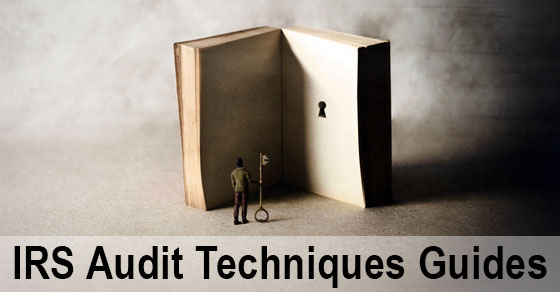Weekly Tax Brief
Is a Health Savings Account right for you?
- Details
- Published: 23 September 2021 23 September 2021

Given the escalating cost of health care, there may be a more cost-effective way to pay for it. For eligible individuals, a Health Savings Account (HSA) offers a tax-favorable way to set aside funds (or have an employer do so) to meet future medical needs. Here are the main tax benefits:
- Contributions made to an HSA are deductible, within limits,
- Earnings on the funds in the HSA aren’t taxed,
- Contributions your employer makes aren’t taxed to you, and
- Distributions from the HSA to cover qualified medical expenses aren’t taxed.
Who’s eligible?
To be eligible for an HSA, you must be covered by a “high deductible health plan.” For 2021, a high deductible health plan is one with an annual deductible of at least $1,400 for self-only coverage, or at least $2,800 for family coverage. For self-only coverage, the 2021 limit on deductible contributions is $3,600. For family coverage, the 2021 limit on deductible contributions is $7,200. Additionally, annual out-of-pocket expenses required to be paid (other than for premiums) for covered benefits can’t exceed $7,000 for self-only coverage or $14,000 for family coverage.
An individual (and the individual’s covered spouse) who has reached age 55 before the close of the year (and is an eligible HSA contributor) may make additional “catch-up” contributions for 2021 of up to $1,000.
HSAs may be established by, or on behalf of, any eligible individual.
Deduction limits
You can deduct contributions to an HSA for the year up to the total of your monthly limitations for the months you were eligible. For 2021, the monthly limitation on deductible contributions for a person with self-only coverage is 1/12 of $3,600. For an individual with family coverage, the monthly limitation on deductible contributions is 1/12 of $7,200. Thus, deductible contributions aren’t limited by the amount of the annual deductible under the high deductible health plan.
Also, taxpayers who are eligible individuals during the last month of the tax year are treated as having been eligible individuals for the entire year for purposes of computing the annual HSA contribution.
However, if an individual is enrolled in Medicare, he or she is no longer eligible under the HSA rules and contributions to an HSA can no longer be made.
On a once-only basis, taxpayers can withdraw funds from an IRA, and transfer them tax-free to an HSA. The amount transferred can be up to the maximum deductible HSA contribution for the type of coverage (individual or family) in effect at the transfer time. The amount transferred is excluded from gross income and isn’t subject to the 10% early withdrawal penalty.
Distributions
HSA Distributions to cover an eligible individual’s qualified medical expenses, or those of his spouse or dependents, aren’t taxed. Qualified medical expenses for these purposes generally mean those that would qualify for the medical expense itemized deduction. If funds are withdrawn from the HSA for other reasons, the withdrawal is taxable. Additionally, an extra 20% tax will apply to the withdrawal, unless it’s made after reaching age 65 or in the event of death or disability.
As you can see, HSAs offer a very flexible option for providing health care coverage, but the rules are somewhat complex. Contact us if you have questions.
© 2021
Tax depreciation rules for business automobiles
- Details
- Published: 21 September 2021 21 September 2021

If you use an automobile in your trade or business, you may wonder how depreciation tax deductions are determined. The rules are complicated, and special limitations that apply to vehicles classified as passenger autos (which include many pickups and SUVs) can result in it taking longer than expected to fully depreciate a vehicle.
Cents-per-mile vs. actual expenses
First, note that separate depreciation calculations for a passenger auto only come into play if you choose to use the actual expense method to calculate deductions. If, instead, you use the standard mileage rate (56 cents per business mile driven for 2021), a depreciation allowance is built into the rate.
If you use the actual expense method to determine your allowable deductions for a passenger auto, you must make a separate depreciation calculation for each year until the vehicle is fully depreciated. According to the general rule, you calculate depreciation over a six-year span as follows: Year 1, 20% of the cost; Year 2, 32%; Year 3, 19.2%; Years 4 and 5, 11.52%; and Year 6, 5.76%. If a vehicle is used 50% or less for business purposes, you must use the straight-line method to calculate depreciation deductions instead of the percentages listed above.
For a passenger auto that costs more than the applicable amount for the year the vehicle is placed in service, you’re limited to specified annual depreciation ceilings. These are indexed for inflation and may change annually.
- For a passenger auto placed in service in 2021 that cost more than $59,000, the Year 1 depreciation ceiling is $18,200 if you choose to deduct $8,000 of first-year bonus depreciation. The annual ceilings for later years are: Year 2, $16,400; Year 3, $9,800; and for all later years, $5,860 until the vehicle is fully depreciated.
- For a passenger auto placed in service in 2021 that cost more than $51,000, the Year 1 depreciation ceiling is $10,200 if you don’t choose to deduct $8,000 of first-year bonus depreciation. The annual ceilings for later years are: Year 2, $16,400; Year 3, $9,800; and for all later years, $5,860 until the vehicle is fully depreciated.
- These ceilings are proportionately reduced for any nonbusiness use. And if a vehicle is used 50% or less for business purposes, you must use the straight-line method to calculate depreciation deductions.
Heavy SUVs, pickups, and vans
Much more favorable depreciation rules apply to heavy SUVs, pickups, and vans used over 50% for business, because they’re treated as transportation equipment for depreciation purposes. This means a vehicle with a gross vehicle weight rating (GVWR) above 6,000 pounds. Quite a few SUVs and pickups pass this test. You can usually find the GVWR on a label on the inside edge of the driver-side door.
After-tax cost is what counts
What’s the impact of these depreciation limits on your business vehicle decisions? They change the after-tax cost of passenger autos used for business. That is, the true cost of a business asset is reduced by the tax savings from related depreciation deductions. To the extent depreciation deductions are reduced, and thereby deferred to future years, the value of the related tax savings is also reduced due to time-value-of-money considerations, and the true cost of the asset is therefore that much higher.
The rules are different if you lease an expensive passenger auto used for business. Contact us if you have questions or want more information.
© 2021
Planning for year-end gifts with the gift tax annual exclusion
- Details
- Published: 16 September 2021 16 September 2021

As we approach the holidays and the end of the year, many people may want to make gifts of cash or stock to their loved ones. By properly using the annual exclusion, gifts to family members and loved ones can reduce the size of your taxable estate, within generous limits, without triggering any estate or gift tax. The exclusion amount for 2021 is $15,000.
The exclusion covers gifts you make to each recipient each year. Therefore, a taxpayer with three children can transfer $45,000 to the children every year free of federal gift taxes. If the only gifts made during a year are excluded in this fashion, there’s no need to file a federal gift tax return. If annual gifts exceed $15,000, the exclusion covers the first $15,000 per recipient, and only the excess is taxable. In addition, even taxable gifts may result in no gift tax liability thanks to the unified credit (discussed below).
Note: This discussion isn’t relevant to gifts made to a spouse because these gifts are free of gift tax under separate marital deduction rules.
Gift-splitting by married taxpayers
If you’re married, a gift made during a year can be treated as split between you and your spouse, even if the cash or gift property is actually given by only one of you. Thus, by gift-splitting, up to $30,000 a year can be transferred to each recipient by a married couple because of their two annual exclusions. For example, a married couple with three married children can transfer a total of $180,000 each year to their children and to the children’s spouses ($30,000 for each of six recipients).
If gift-splitting is involved, both spouses must consent to it. Consent should be indicated on the gift tax return (or returns) that the spouses file. The IRS prefers that both spouses indicate their consent on each return filed. Because more than $15,000 is being transferred by a spouse, a gift tax return (or returns) will have to be filed, even if the $30,000 exclusion covers total gifts. We can prepare a gift tax return (or returns) for you, if more than $15,000 is being given to a single individual in any year.)
“Unified” credit for taxable gifts
Even gifts that aren’t covered by the exclusion, and that are thus taxable, may not result in a tax liability. This is because a tax credit wipes out the federal gift tax liability on the first taxable gifts that you make in your lifetime, up to $11.7 million for 2021. However, to the extent you use this credit against a gift tax liability, it reduces (or eliminates) the credit available for use against the federal estate tax at your death.
Be aware that gifts made directly to a financial institution to pay for tuition or to a health care provider to pay for medical expenses on behalf of someone else do not count towards the exclusion. For example, you can pay $20,000 to your grandson’s college for his tuition this year, plus still give him up to $15,000 as a gift.
Annual gifts help reduce the taxable value of your estate. There have been proposals in Washington to reduce the estate and gift tax exemption amount, as well as make other changes to the estate tax laws. Making large tax-free gifts may be one way to recognize and address this potential threat. It could help insulate you against any later reduction in the unified federal estate and gift tax exemption.
© 2021
Tax breaks to consider during National Small Business Week
- Details
- Published: 14 September 2021 14 September 2021

The week of September 13-17 has been declared National Small Business Week by the Small Business Administration. To commemorate the week, here are three tax breaks to consider.
1. Claim bonus depreciation or a Section 179 deduction for asset additions
Under current law, 100% first-year bonus depreciation is available for qualified new and used property that’s acquired and placed in service in calendar year 2021. That means your business might be able to write off the entire cost of some or all asset additions on this year’s return. Consider making acquisitions between now and December 31.
Note: It doesn’t always make sense to claim a 100% bonus depreciation deduction in the first year that qualifying property is placed in service. For example, if you think that tax rates will increase in the future — either due to tax law changes or a change in your income — it might be better to forgo bonus depreciation and instead depreciate your 2021 asset acquisitions over time.
There’s also a Section 179 deduction for eligible asset purchases. The maximum Section 179 deduction is $1.05 million for qualifying property placed in service in 2021. Recent tax laws have enhanced Section 179 and bonus depreciation but most businesses benefit more by claiming bonus depreciation. We can explain the details of these tax breaks and which is right for your business. You don’t have to decide until you file your tax return.
2. Claim bonus depreciation for a heavy vehicle
The 100% first-year bonus depreciation provision can have a sizable, beneficial impact on first-year depreciation deductions for new and used heavy SUVs, pickups and vans used over 50% for business. For federal tax purposes, heavy vehicles are treated as transportation equipment so they qualify for 100% bonus depreciation.
This option is available only when the manufacturer’s gross vehicle weight rating (GVWR) is above 6,000 pounds. You can verify a vehicle’s GVWR by looking at the manufacturer’s label, usually found on the inside edge of the driver’s side door.
Buying an eligible vehicle and placing it in service before the end of the year can deliver a big write-off on this year’s return. Before signing a sales contract, we can help evaluate what’s right for your business.
3. Maximize the QBI deduction for pass-through businesses
A valuable deduction is the one based on qualified business income (QBI) from pass-through entities. For tax years through 2025, the deduction can be up to 20% of a pass-through entity owner’s QBI. This deduction is subject to restrictions that can apply at higher income levels and based on the owner’s taxable income.
For QBI deduction purposes, pass-through entities are defined as sole proprietorships, single-member LLCs that are treated as sole proprietorships for tax purposes, partnerships, LLCs that are treated as partnerships for tax purposes and S corporations. For these taxpayers, the deduction can also be claimed for up to 20% of income from qualified real estate investment trust dividends and 20% of qualified income from publicly traded partnerships.
Because of various limitations on the QBI deduction, tax planning moves can unexpectedly increase or decrease it. For example, strategies that reduce this year’s taxable income can have the negative side-effect of reducing your QBI deduction.
Plan ahead
These are only a few of the tax breaks your small business may be able to claim. Contact us to help evaluate your planning options and optimize your tax results.
© 2021
Selling a home: Will you owe tax on the profit?
- Details
- Published: 10 September 2021 10 September 2021

Many homeowners across the country have seen their home values increase recently. According to the National Association of Realtors, the median price of homes sold in July of 2021 rose 17.8% over July of 2020. The median home price was $411,200 in the Northeast, $275,300 in the Midwest, $305,200 in the South and $508,300 in the West.
Be aware of the tax implications if you’re selling your home or you sold one in 2021. You may owe capital gains tax and net investment income tax (NIIT).
Gain exclusion
If you’re selling your principal residence, and meet certain requirements, you can exclude from tax up to $250,000 ($500,000 for joint filers) of gain.
To qualify for the exclusion, you must meet these tests:
- You must have owned the property for at least two years during the five-year period ending on the sale date.
- You must have used the property as a principal residence for at least two years during the five-year period. (Periods of ownership and use don’t need to overlap.)
In addition, you can’t use the exclusion more than once every two years.
Gain above the exclusion amount
What if you have more than $250,000/$500,000 of profit? Any gain that doesn’t qualify for the exclusion generally will be taxed at your long-term capital gains rate, provided you owned the home for at least a year. If you didn’t, the gain will be considered short term and subject to your ordinary-income rate, which could be more than double your long-term rate.
If you’re selling a second home (such as a vacation home), it isn’t eligible for the gain exclusion. But if it qualifies as a rental property, it can be considered a business asset, and you may be able to defer tax on any gains through an installment sale or a Section 1031 like-kind exchange. In addition, you may be able to deduct a loss.
The NIIT
How does the 3.8% NIIT apply to home sales? If you sell your main home, and you qualify to exclude up to $250,000/$500,000 of gain, the excluded gain isn’t subject to the NIIT.
However, gain that exceeds the exclusion limit is subject to the tax if your adjusted gross income is over a certain amount. Gain from the sale of a vacation home or other second residence, which doesn’t qualify for the exclusion, is also subject to the NIIT.
The NIIT applies only if your modified adjusted gross income (MAGI) exceeds: $250,000 for married taxpayers filing jointly and surviving spouses; $125,000 for married taxpayers filing separately; and $200,000 for unmarried taxpayers and heads of household.
Two other tax considerations
- Keep track of your basis. To support an accurate tax basis, be sure to maintain complete records, including information about your original cost and subsequent improvements, reduced by any casualty losses and depreciation claimed for business use.
- You can’t deduct a loss. If you sell your principal residence at a loss, it generally isn’t deductible. But if a portion of your home is rented out or used exclusively for business, the loss attributable to that part may be deductible.
As you can see, depending on your home sale profit and your income, some or all of the gain may be tax free. But for higher-income people with pricey homes, there may be a tax bill. We can help you plan ahead to minimize taxes and answer any questions you have about home sales.
© 2021
Claiming a theft loss deduction if your business is the victim of embezzlement
- Details
- Published: 07 September 2021 07 September 2021

A business may be able to claim a federal income tax deduction for a theft loss. But does embezzlement count as theft? In most cases it does but you’ll have to substantiate the loss. A recent U.S. Tax Court decision illustrates how that’s sometimes difficult to do.
Basic rules for theft losses
The tax code allows a deduction for losses sustained during the taxable year and not compensated by insurance or other means. The term “theft” is broadly defined to include larceny, embezzlement and robbery. In general, a loss is regarded as arising from theft only if there’s a criminal element to the appropriation of a taxpayer’s property.
In order to claim a theft loss deduction, a taxpayer must prove:
- The amount of the loss,
- The date the loss was discovered, and
- That a theft occurred under the law of the jurisdiction where the alleged loss occurred.
Facts of the recent court case
Years ago, the taxpayer cofounded an S corporation with another shareholder. At the time of the alleged embezzlement, the other original shareholder was no longer a shareholder, and she wasn’t supposed to be compensated by the business. However, according to court records, she continued to manage the S corporation’s books and records.
The taxpayer suffered an illness that prevented him from working for most of the year in question. During this time, the former shareholder paid herself $166,494. Later, the taxpayer filed a civil suit in a California court alleging that the woman had misappropriated funds from the business.
On an amended tax return, the corporation reported a $166,494 theft loss due to the embezzlement. The IRS denied the deduction. After looking at the embezzlement definition under California state law, the Tax Court agreed with the IRS.
The Tax Court stated that the taxpayer didn’t offer evidence that the former shareholder “acted with the intent to defraud,” and the taxpayer didn’t show that the corporation “experienced a theft meeting the elements of embezzlement under California law.”
The IRS and the court also denied the taxpayer’s alternate argument that the corporation should be allowed to claim a compensation deduction for the amount of money the former shareholder paid herself. The court stated that the taxpayer didn’t provide evidence that the woman was entitled to be paid compensation from the corporation and therefore, the corporation wasn’t entitled to a compensation deduction. (TC Memo 2021-66)
How to proceed if you’re victimized
If your business is victimized by theft, embezzlement or internal fraud, you may be able to claim a tax deduction for the loss. Keep in mind that a deductible loss can only be claimed for the year in which the loss is discovered, and that you must meet other tax-law requirements. Keep records to substantiate the claimed theft loss, including when you discovered the loss. If you receive an insurance payment or other reimbursement for the loss, that amount must be subtracted when computing the deductible loss for tax purposes. Contact us with any questions you may have about theft and casualty loss deductions.
© 2021
You can only claim a casualty loss tax deduction in certain situations
- Details
- Published: 02 September 2021 02 September 2021

In recent weeks, some Americans have been victimized by hurricanes, severe storms, flooding, wildfires and other disasters. No matter where you live, unexpected disasters may cause damage to your home or personal property. Before the Tax Cuts and Jobs Act (TCJA), eligible casualty loss victims could claim a deduction on their tax returns. But there are now restrictions that make these deductions harder to take.
What’s considered a casualty for tax purposes? It’s a sudden, unexpected or unusual event, such as a hurricane, tornado, flood, earthquake, fire, act of vandalism or a terrorist attack.
More difficult to qualify
For losses incurred through 2025, the TCJA generally eliminates deductions for personal casualty losses, except for losses due to federally declared disasters. For example, during the summer of 2021, there have been presidential declarations of major disasters in parts of Tennessee, New York state, Florida and California after severe storms, flooding and wildfires. So victims in affected areas would be eligible for casualty loss deductions.
Note: There’s an exception to the general rule of allowing casualty loss deductions only in federally declared disaster areas. If you have personal casualty gains because your insurance proceeds exceed the tax basis of the damaged or destroyed property, you can deduct personal casualty losses that aren’t due to a federally declared disaster up to the amount of your personal casualty gains.
Special election to claim a refund
If your casualty loss is due to a federally declared disaster, a special election allows you to deduct the loss on your tax return for the preceding year and claim a refund. If you’ve already filed your return for the preceding year, you can file an amended return to make the election and claim the deduction in the earlier year. This can potentially help you get extra cash when you need it.
This election must be made by no later than six months after the due date (without considering extensions) for filing your tax return for the year in which the disaster occurs. However, the election itself must be made on an original or amended return for the preceding year.
How to calculate the deduction
You must take the following three steps to calculate the casualty loss deduction for personal-use property in an area declared a federal disaster:
- Subtract any insurance proceeds.
- Subtract $100 per casualty event.
- Combine the results from the first two steps and then subtract 10% of your adjusted gross income (AGI) for the year you claim the loss deduction.
Important: Another factor that now makes it harder to claim a casualty loss than it used to be years ago is that you must itemize deductions to claim one. Through 2025, fewer people will itemize, because the TCJA significantly increased the standard deduction amounts. For 2021, they’re $12,550 for single filers, $18,800 for heads of households, and $25,100 for married joint-filing couples.
So even if you qualify for a casualty deduction, you might not get any tax benefit, because you don’t have enough itemized deductions.
Contact us
These are the rules for personal property. Keep in mind that the rules for business or income-producing property are different. (It’s easier to get a deduction for business property casualty losses.) If you are a victim of a disaster, we can help you understand the complex rules.
© 2021
Want to find out what IRS auditors know about your business industry?
- Details
- Published: 01 September 2021 01 September 2021

In order to prepare for a business audit, an IRS examiner generally does research about the specific industry and issues on the taxpayer’s return. Examiners may use IRS “Audit Techniques Guides (ATGs).” A little-known secret is that these guides are available to the public on the IRS website. In other words, your business can use the same guides to gain insight into what the IRS is looking for in terms of compliance with tax laws and regulations.
Many ATGs target specific industries or businesses, such as construction, aerospace, art galleries, architecture and veterinary medicine. Others address issues that frequently arise in audits, such as executive compensation, passive activity losses and capitalization of tangible property.
Unique issues
IRS auditors need to examine different types of businesses, as well as individual taxpayers and tax-exempt organizations. Each type of return might have unique industry issues, business practices and terminology. Before meeting with taxpayers and their advisors, auditors do their homework to understand various industries or issues, the accounting methods commonly used, how income is received, and areas where taxpayers might not be in compliance.
By using a specific ATG, an auditor may be able to reconcile discrepancies when reported income or expenses aren’t consistent with what’s normal for the industry or to identify anomalies within the geographic area in which the business is located.
Updates and revisions
Some guides were written several years ago and others are relatively new. There is not a guide for every industry. Here are some of the guide titles that have been revised or added this year:
- Retail Industry (March 2021),
- Construction Industry (April 2021),
- Nonqualified Deferred Compensation (June 2021), and
- Real Estate Property Foreclosure and Cancellation of Debt (August 2021).
Although ATGs were created to help IRS examiners uncover common methods of hiding income and inflating deductions, they also can help businesses ensure they aren’t engaging in practices that could raise audit red flags. For a complete list of ATGs, visit the IRS website here: http://bit.ly/2rh7umD
© 2021
Does your employer provide life insurance? Here are the tax consequences
- Details
- Published: 26 August 2021 26 August 2021

Employer-provided life insurance is a coveted fringe benefit. However, if group term life insurance is part of your benefit package, and the coverage is higher than $50,000, there may be undesirable income tax implications.
Tax on income you don’t receive
The first $50,000 of group term life insurance coverage that your employer provides is excluded from taxable income and doesn’t add anything to your income tax bill. But the employer-paid cost of group term coverage in excess of $50,000 is taxable income to you. It’s included in the taxable wages reported on your Form W-2 — even though you never actually receive it. In other words, it’s “phantom income.”
What’s worse, the cost of group term insurance must be determined under a table prepared by the IRS even if the employer’s actual cost is less than the cost figured under the table. With these determinations, the amount of taxable phantom income attributed to an older employee is often higher than the premium the employee would pay for comparable coverage under an individual term policy. This tax trap gets worse as an employee gets older and as the amount of his or her compensation increases.
Your W-2 has answers
What should you do if you think the tax cost of employer-provided group term life insurance is higher than you’d like? First, you should establish if this is actually the case. If a specific dollar amount appears in Box 12 of your Form W-2 (with code “C”), that dollar amount represents your employer’s cost of providing you with group term life insurance coverage in excess of $50,000, less any amount you paid for the coverage. You’re responsible for federal, state and local taxes on the amount that appears in Box 12 and for the associated Social Security and Medicare taxes as well.
But keep in mind that the amount in Box 12 is already included as part of your total “Wages, tips and other compensation” in Box 1 of the W-2, and it’s the Box 1 amount that’s reported on your tax return
Possible options
If you decide that the tax cost is too high for the benefit you’re getting in return, find out whether your employer has a “carve-out” plan (a plan that carves out selected employees from group term coverage) or, if not, whether it would be willing to create one. There are different types of carve-out plans that employers can offer to their employees.
For example, the employer can continue to provide $50,000 of group term insurance (since there’s no tax cost for the first $50,000 of coverage). Then, the employer can either provide the employee with an individual policy for the balance of the coverage, or give the employee the amount the employer would have spent for the excess coverage as a cash bonus that the employee can use to pay the premiums on an individual policy.
Contact us if you have questions about group term coverage or whether it’s adding to your tax bill.
© 2021
10 facts about the pass-through deduction for qualified business income
- Details
- Published: 28 July 2021 28 July 2021

Are you eligible to take the deduction for qualified business income (QBI)? Here are 10 facts about this valuable tax break, referred to as the pass-through deduction, QBI deduction or Section 199A deduction.
- It’s available to owners of sole proprietorships, single member limited liability companies (LLCs), partnerships and S corporations. It may also be claimed by trusts and estates.
- The deduction is intended to reduce the tax rate on QBI to a rate that’s closer to the corporate tax rate.
- It’s taken “below the line.” That means it reduces your taxable income but not your adjusted gross income. But it’s available regardless of whether you itemize deductions or take the standard deduction.
- The deduction has two components: 20% of QBI from a domestic business operated as a sole proprietorship or through a partnership, S corporation, trust or estate; and 20% of the taxpayer’s combined qualified real estate investment trust (REIT) dividends and qualified publicly traded partnership income.
- QBI is the net amount of a taxpayer’s qualified items of income, gain, deduction and loss relating to any qualified trade or business. Items of income, gain, deduction and loss are qualified to the extent they’re effectively connected with the conduct of a trade or business in the U.S. and included in computing taxable income.
- QBI doesn’t necessarily equal the net profit or loss from a business, even if it’s a qualified trade or business. In addition to the profit or loss from Schedule C, QBI must be adjusted by certain other gain or deduction items related to the business.
- A qualified trade or business is any trade or business other than a specified service trade or business (SSTB). But an SSTB is treated as a qualified trade or business for taxpayers whose taxable income is under a threshold amount.
- SSTBs include health, law, accounting, actuarial science, certain performing arts, consulting, athletics, financial services, brokerage services, investment, trading, dealing securities and any trade or business where the principal asset is the reputation or skill of its employees or owners.
- There are limits based on W-2 wages. Inflation-adjusted threshold amounts also apply for purposes of applying the SSTB rules. For tax years beginning in 2021, the threshold amounts are $164,900 for singles and heads of household; $164,925 for married filing separately; and $329,800 for married filing jointly. The limits phase in over a $50,000 range ($100,000 for a joint return). This means that the deduction reduces ratably, so that by the time you reach the top of the range ($214,900 for singles and heads of household; $214,925 for married filing separately; and $429,800 for married filing jointly) the deduction is zero for income from an SSTB.
- For businesses conducted as a partnership or S corporation, the pass-through deduction is calculated at the partner or shareholder level.
As you can see, this substantial deduction is complex, especially if your taxable income exceeds the thresholds discussed above. Other rules apply. Contact us if you have questions about your situation.





